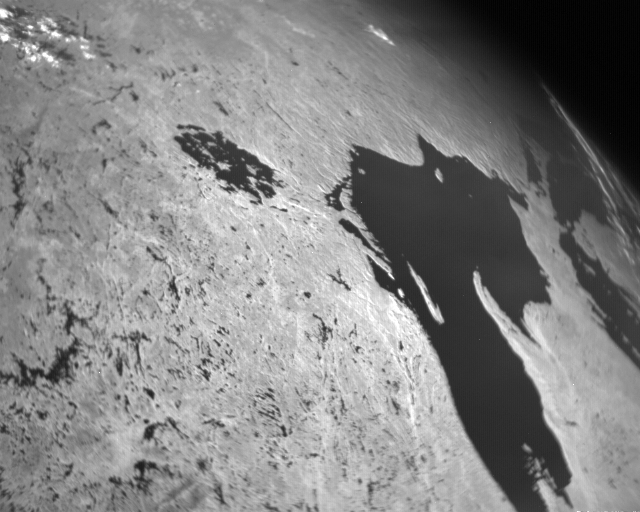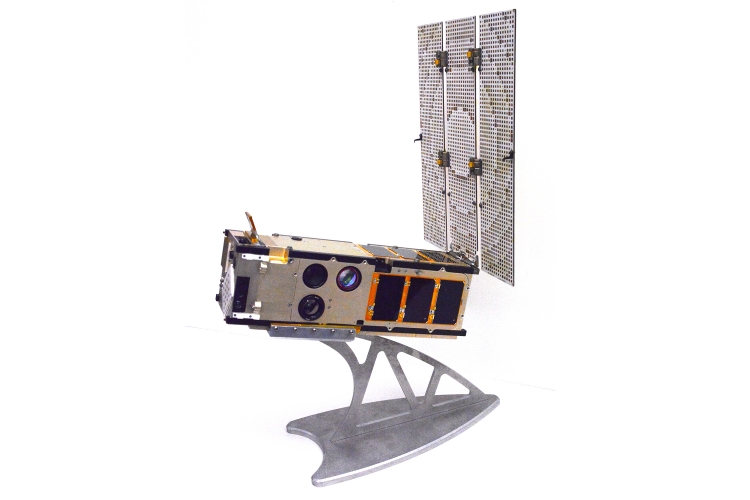The Integrated Solar Array and Reflectarray Antenna (ISARA) CubeSat mission—managed by NASA’s Jet Propulsion Lab (JPL), operated by Aerospace, and sponsored by NASA’s Small Spacecraft Technology Program—was the first time a reflectarray antenna successfully completed a technology demonstration in space. The antenna’s space-saving, flat-panel design also allowed for the CubeSat Multispectral Observing System (CUMULOS) to fly as a secondary payload.

Reflectarray Antenna is the First to Fly in Space

The size of a loaf of bread, the ISARA CubeSat launched as one of 14 CubeSats to rideshare aboard the S.S. Gene Cernan Cygnus spacecraft from NASA’s Wallops Flight Facility in Virginia. The Cygnus spacecraft was on a resupply mission to the International Space Station. After Cygnus departed from the space station on Dec. 6, 2017, the ISARA CubeSat was released and the reflectarray was deployed a few weeks later. After months of testing, ISARA displayed the ability to transfer data at ultrafast speeds of up to 100 Mbps.
“The ISARA mission demonstrated that a small 3U-class satellite can achieve a very high 100 Mbps data rate using a small, low-cost, ground station,” said Richard Hodges, NASA principal investigator for ISARA. “The key to this is the reflectarray antenna, which has now – for the first time – been proven in space. This is a significant milestone in antenna technology.”
CUMULOS Achieves First Light
An Aerospace-developed technology, CUMULOS is the first infrared sensor flown as part of the Aerospace's AeroCube program which allows infrared weather imagery to be studied by a small satellite. Made of three compact cameras with lenses an inch or less in diameter, CUMULOS has a visible wavelength camera, a short-wavelength infrared camera, and a long-wavelength infrared, microbolometer camera.
Designed for weather and Earth environmental monitoring, the CUMULOS cameras can measure surface temperature, detect environmental hotspots, take cloud cover pictures, and provide nighttime lights imaging. In June 2018, CUMULOS achieved first light, which means it successfully turned on and started operating.
“This is the first infrared imaging sensor payload that we’ve launched on a CubeSat and its successful turn-on and operation is a major milestone for us,” said Dee Pack, principal investigator for the CUMULOS mission and director of Aerospace’s Remote Sensing Department. “We appreciate Caltech’s Jet Propulsion Laboratory and NASA’s Small Spacecraft Technology Program for extending us the opportunity to fly CUMULOS as a secondary payload onboard the ISARA mission.” CUMULOS’ accomplishments will lead to the possibility of executing weather forecasting and other Earth observation missions with small satellites in the future.

The Future of Small Sat Tech Demo Missions
The success of ISARA and CUMULOS is a stepping stone toward the role small satellites will play in the future of space technologies. Since small satellites are less expensive, take less time to build, and are more nimble, they are poised to take on missions that, in the past, used to be possible only with larger, more-expensive satellites. Although small satellites will never completely replace large satellites, the success of the ISARA and CUMULOS missions have already demonstrated that they can easily be used for technology demonstration missions at a fraction of the cost.

